Willow-Powered Nature Solution
Projects Sponsor
Environment services company Ramo is leading a nationwide circular economy project to plant 85 million willow trees, growing nature-based solutions that rehabilitate marginal lands and support climate action. With 20 million willow trees already in the ground—Ramo’s goal of restoring thousands of hectares of mine sites, landfills, and marginal lands is in sight. Each year, these initiatives regenerate degraded soils and ecosystems, treat over 44 million litres of wastewater, and repurpose 17,600 tonnes of organic residuals, enabling up to 8,000 tonnes of CO₂ to be captured annually demonstrating that where there’s a willow there’s a way.
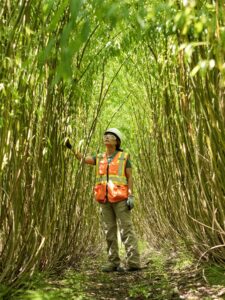 Groupe Ramo, an environmental services company, developed a replicable circular economy hub to address multiple environmental challenges. Their ambitious objectives are to restore degraded mining, landfill, and agricultural sites; treat wastewater through evapotranspiration; transform residuals into vegetative substrates and capture carbon at scale; and they’re doing all that by planting trees. Ramo identified willow plantations on marginal lands as a natural, sustainable, versatile, and scalable solution to degraded sites, soil depletion, the landfilling of organic residuals that could be repurposed, leachate discharge into aquatic environments and the climate emergency.
Groupe Ramo, an environmental services company, developed a replicable circular economy hub to address multiple environmental challenges. Their ambitious objectives are to restore degraded mining, landfill, and agricultural sites; treat wastewater through evapotranspiration; transform residuals into vegetative substrates and capture carbon at scale; and they’re doing all that by planting trees. Ramo identified willow plantations on marginal lands as a natural, sustainable, versatile, and scalable solution to degraded sites, soil depletion, the landfilling of organic residuals that could be repurposed, leachate discharge into aquatic environments and the climate emergency.
Before launching the Willow-Powered Nature Solution project, Ramo conducted several feasibility studies on various types of degraded sites—mining sites, landfills, and marginal lands. These studies analyzed soil composition, the nature of nearby fertilizing residuals, leachate quality, and the growth potential of willows in northern conditions. The results confirmed the agronomic and environmental viability of the model, the effectiveness of trees in wastewater treatment, and the potential to produce a high-performing, renewable substrate for site restoration.
From 2008 to 2023 the team conducted three research projects with university partners to assess the water treatment capacity of willows. In-house expertise was developed and $6.8 million invested in 2021–2022 allowed for the establishment of a large-scale nursery enabling the production of over 30 million trees annually, including more than 70 hybrid and native genotypes. It was time to get growing.
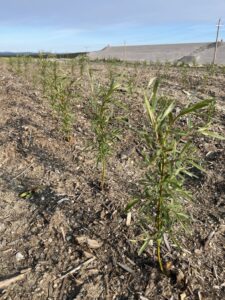 After completing this research and defining their restoration objectives, Ramo began selecting growth sites based on agronomic, hydrological, and logistical criteria. Soil preparation followed, with the integration of fertilizing residuals as organic amendments for the plantations. Beginning in 2023, willows were planted at scale, in some cases with an Evaplant irrigation system which allowed for the controlled application of wastewater.
After completing this research and defining their restoration objectives, Ramo began selecting growth sites based on agronomic, hydrological, and logistical criteria. Soil preparation followed, with the integration of fertilizing residuals as organic amendments for the plantations. Beginning in 2023, willows were planted at scale, in some cases with an Evaplant irrigation system which allowed for the controlled application of wastewater.
Environmental monitoring and the vegetative substrate harvesting complete the cycle, ensuring the continuous regeneration of sites. That same year, their first substrate production hub for mine site revegetation through tree planting was launched as was their first willow planting pilot on a northern mine site in ArcelorMittal, Quebec.
In 2024 the first trial of fertilizing residuals recovery was undertaken in Northern Quebec and Ontario and 2025 saw the first harvest of wood chips for substrate production and the development of a new harvesting method—closing the tree crop circle, but getting there was a journey.
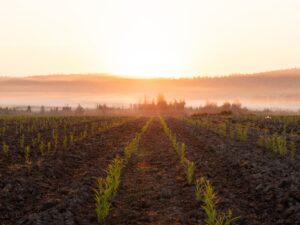 Establishing willow plantations on marginal sites is no picnic. Unlike agricultural lands, these degraded areas had highly heterogeneous soils—often compacted, low in organic matter, or contaminated. Their location in northern regions added a significant climatic constraint to the mix, with conditions vastly different from the south, making successful planting more complex. Mechanized and precise soil preparation required specific agronomic adjustments to ensure proper root establishment and optimal willow growth.
Establishing willow plantations on marginal sites is no picnic. Unlike agricultural lands, these degraded areas had highly heterogeneous soils—often compacted, low in organic matter, or contaminated. Their location in northern regions added a significant climatic constraint to the mix, with conditions vastly different from the south, making successful planting more complex. Mechanized and precise soil preparation required specific agronomic adjustments to ensure proper root establishment and optimal willow growth.
A shortage of local labor and the lack of regional expertise required the training of new technical personnel and the establishment of new strategic partnerships to ensure the success of the initiatives. Projects of this scale are impossible without the support of local communities and those connections had to be made.
Droughts and flooding complicated the execution of certain projects, another example of climate itself hampering the fight against climate change. This crisis is, in some sense, the existential “Need my glasses to find my glasses” dilemma of our time. Ramo learned from these experiences and is now much better equipped to handle the unpredictable weather extremes we increasingly face.
Another significant challenge involved securing the necessary approvals from regulatory authorities. Nature-based solutions—such as applying wastewater to plantations—are still not widely recognized and differ substantially from conventional water treatment methods. The Ramo’s team overcame this barrier through rigorous processes, ongoing dialogue with regulators, and scientific demonstrations of the environmental effectiveness of the proposed model.
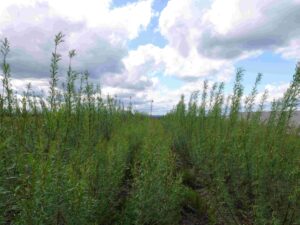 An undertaking of this magnitude needs partners. Fortunately, Natural Resources Canada, through the 2 Billion Trees program, provided financial support for the planting of over 20 million trees. The Federation of Canadian Municipalities, via the Green Municipal Fund, contributed to the financing of pilot projects for leachate treatment. Ramo also worked in collaboration with the Université de Montréal and the Institut de recherche en biologie végétale (IRBV) for the development of its Evaplant water treatment technology. Researchers from Université Laval oversaw the agronomic and ecological monitoring of the willow plantations. The financial involvement of major partners like WM and ArcelorMittal is a powerful lever for large-scale deployment of our solutions across North America as there were here. Municipalities, along with landfill and mining site operators, facilitated site access and the integration of solutions into their operations and all these partners have seen literal growth on their investment.
An undertaking of this magnitude needs partners. Fortunately, Natural Resources Canada, through the 2 Billion Trees program, provided financial support for the planting of over 20 million trees. The Federation of Canadian Municipalities, via the Green Municipal Fund, contributed to the financing of pilot projects for leachate treatment. Ramo also worked in collaboration with the Université de Montréal and the Institut de recherche en biologie végétale (IRBV) for the development of its Evaplant water treatment technology. Researchers from Université Laval oversaw the agronomic and ecological monitoring of the willow plantations. The financial involvement of major partners like WM and ArcelorMittal is a powerful lever for large-scale deployment of our solutions across North America as there were here. Municipalities, along with landfill and mining site operators, facilitated site access and the integration of solutions into their operations and all these partners have seen literal growth on their investment.
Ramo’s efforts have put over 30 million trees in the ground and planted 800 hectares, enabling the capture of up to 8,000 tonnes of CO₂ per year and nearly 240,000 tonnes over 30 years. Each year, the plantations generate more than 8,000 tonnes of organic matter used to restore degraded mining and agricultural sites. These actions directly contribute to ecosystem restoration, generating the kind of large-scale measurable, environmental benefits desperately needed in the fight against climate change.
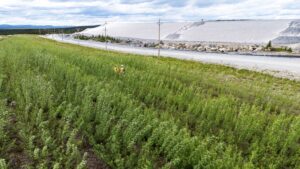 The Ramo’s project is a unique combination of willow tree plantations, leachate treatment through evapotranspiration, the recovery of fertilizing residual materials, and the production of vegetative substrates for the mining industry. What’s been achieved here is an integrated solution—natural, technological, and circular—and once you get something like that rolling there’s no stopping it.
The Ramo’s project is a unique combination of willow tree plantations, leachate treatment through evapotranspiration, the recovery of fertilizing residual materials, and the production of vegetative substrates for the mining industry. What’s been achieved here is an integrated solution—natural, technological, and circular—and once you get something like that rolling there’s no stopping it.
By demonstrating the real-world potential of nature-based solutions, while delivering positive outcomes for communities, the project has mobilized both public and private actors. Grounded in local resources, proven practices, and an innovative approach, the model is replicable and can be deployed across a wide range of degraded sites throughout Canada.
Ramo’s Willow-Powered Nature Solution offers a graceful solution to some of our gravest climate change challenges, demonstrating that though the road may be rocky, or otherwise low in organic matter, where there’s a willow there’s a way.













